A History of Rome and Pluto Returns Part 5: Modern Rome’s Pluto Returns: Let’s Try this Again!
Modern Rome and Pluto Returns

The Fall of Constantinople brings us to the modern era. Rome has experienced two more Pluto Returns since then. Here these last Pluto returns show some interesting manifestations of how to successfully navigate a Pluto Return.
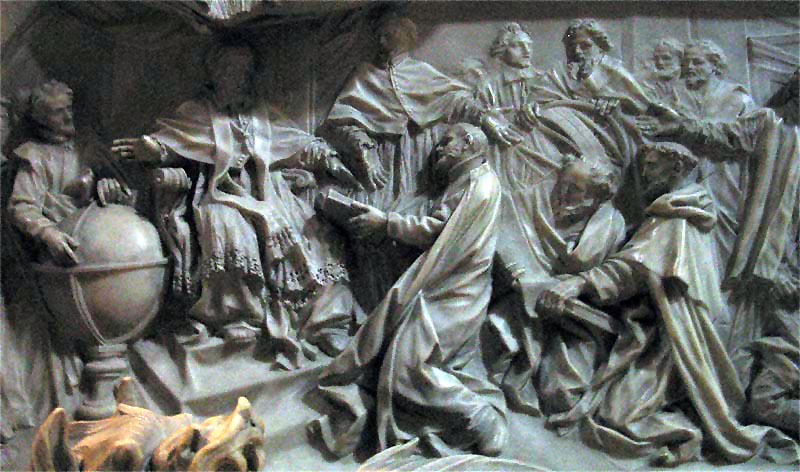
The tenth Pluto cycle saw the Papal States reached its greatest territorial extent in Italy by adding several duchies to their domain. They also became very influential during this time. It was in this cycle that the Gregorian calendar was developed under Pope Gregory XIII. This is the calendar we use today to keep track of time.
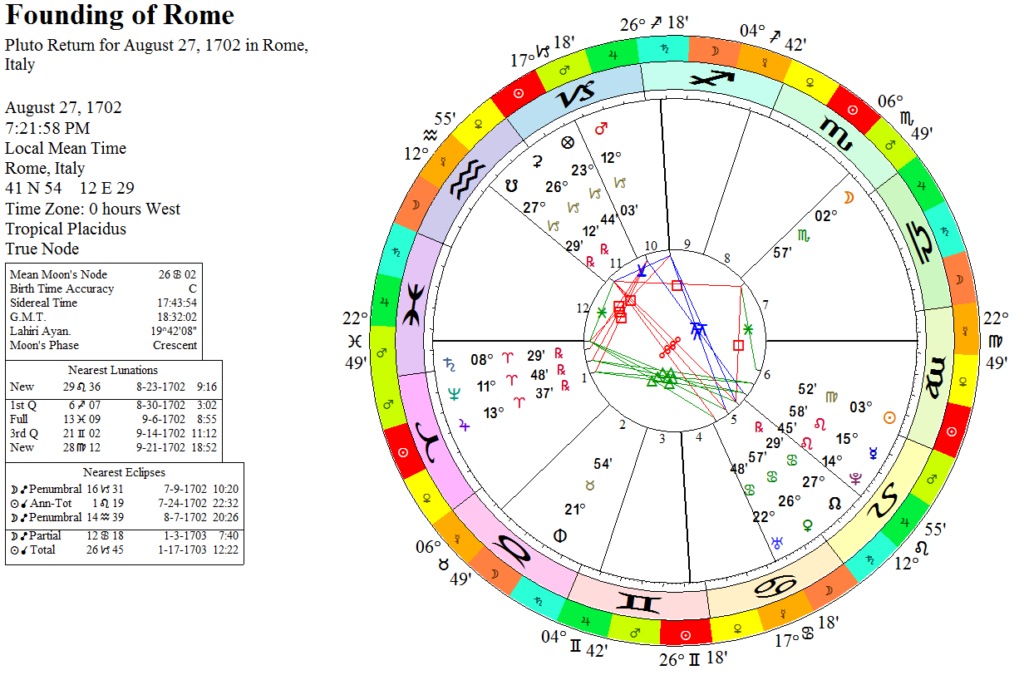
For the tenth Pluto Return of Rome in 1702-1703 AD, another invasion threat occurred. This time it was triggered by the War of Spanish Succession. At the time Spain controlled a large portions of Italy. Around 1709, Austria was threatening Rome, but Pope Clement XI, back the Austrian King’s claimed the throne of Spain and prevented an invasion of Rome itself, although most of northern Italy was occupied by Austrian armies.

An interesting side note of the time was that Pope Clement XI was interested in archaeology. He authorized the Roman catacombs to be excavated around the tenth Pluto Return. In modern astrology Pluto relates very much to the underground areas associated with death. Placing the state’s energy in this activity probably prevented the worse from happening at this time.
The 11th Pluto cycle saw the end of the Papal States and a reunified Italy, first under a monarchy, and then towards the end of the cycle and after World War I, under fascism. During this time the Papal States fought against Italian unification. Even after Italy was unified and Rome made its new capital the question of the Papal States lingered for decades.

It was only towards the end of the cycle in 1929, the Lateran Treaty was signed with between the Pope and Italy. Here the Pope relinquished the claim to most of Rome except a small area called Vatican City today. From this point on Rome was truly the capital of the modern state of Italy, and the now this state is controlled by Rome’s Pluto Returns.

Coincidentally the 11th Pluto Return of Rome happened close to World War II, in 1947-1948 AD. In 1943-1945 AD Italy was invaded by the combined forces of American, Great Britain, and Brazil. While this was definitely an existential threat to Rome at the time, the actual time of the Pluto Return was more constructive as it was during this time that Italy rewrote its constitution and became a Republic again.
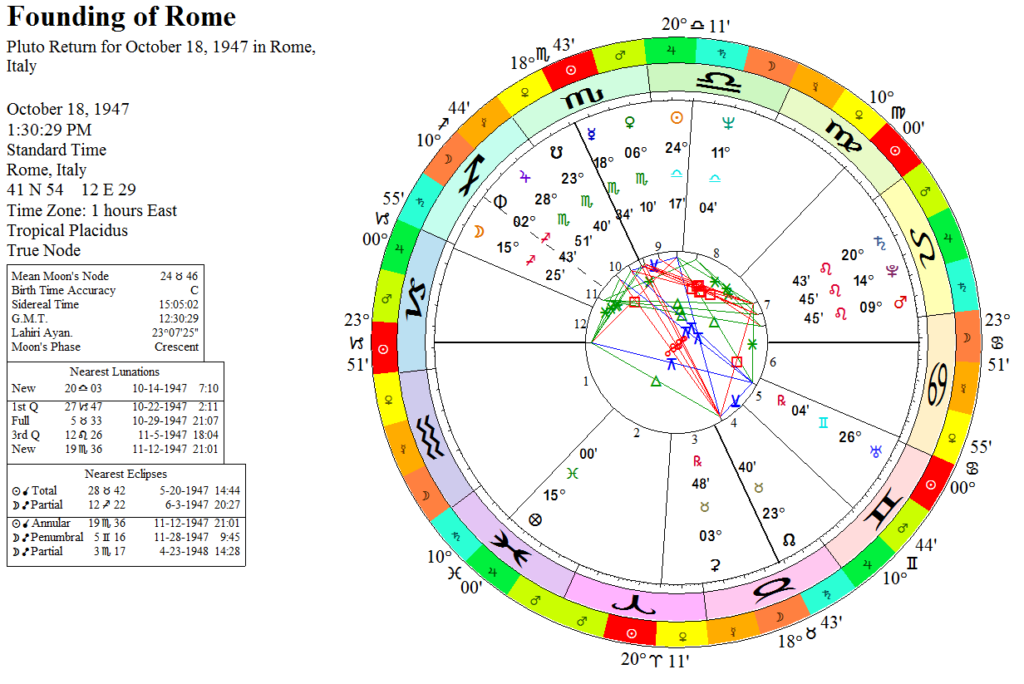
While this Return can count both towards in the internal crisis category and the external threat category, I like to to think this is more an internal crisis. Italy was a minor player in World War II and the Germans did most of the fighting for the Italians in Italy. And writing a constitution becoming a republic again for the first time in nearly 2,000 years is a much better use of Pluto’s transformative energies.
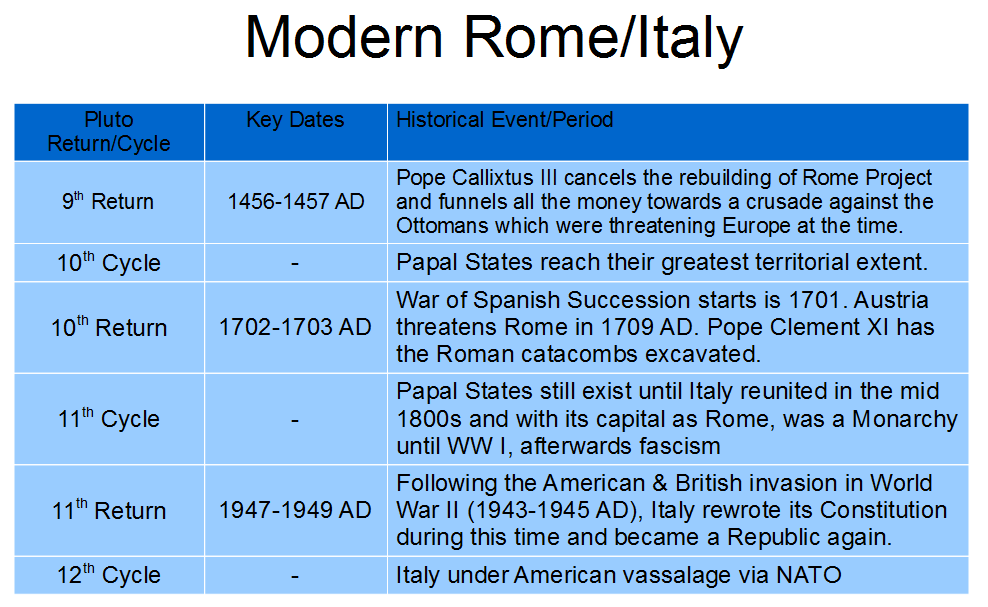
We are currently in the 12th Pluto cycle of Rome. So far this cycle is mostly about the Italian vassalage to American via NATO. An interesting fact about the US is that despite it having more in common with Rome as a nation state, it actually operates NATO a lot like Ancient Athens did the Delian League.
Conclusions on Rome and Pluto Returns
Based on this research, there are three main types of experiences that occur during a nation’s Pluto Return. These are internal crises or a change in government, an external crisis or existential threat, and the rise of a strong autocratic ruler. Some Pluto Returns can also be a mixture of two of these concepts. For example 19-17 BC Pluto Return featured the strong autocratic rule of Augustus, while a change of government from a Republic to an Empire.

Therefore, the type of Pluto Returns listed in the table above show six different types of Pluto Returns as experienced by Rome. Two things stand out from looking at the totals. First is an external crisis or existential threat that was the most likely experience of a Pluto Return by Rome. This often resulted historically in either being invaded, or under severe threat of invasion. This total is even more impressive if the combination of internal and external crisis are added to it.
An internal crisis/change in government did occur frequently with an external crisis too. In fact one could say that nations rarely change their government when things are going well, but during a Pluto Return things are almost never well. Only during one Pluto Return was there no external threat that resulted in a change of a government. It seems like a nation’s Pluto Return means this is one of the most favorable times to make changes to a government, barring some type of massive invasion.
In about a fourth of the cases, strong autocratic rules came to power. So this is a possibility during any nation’s Pluto Return and depending on other factors this could be an interpretation. However, this should not be the mostly likely one for a prediction. The more likely explanation should be an external crisis or an existential threat.
Is there a way to predict which interpretation is more likely? Possibly using the Neptune placement. Neptune and Pluto are in a 3:2 resonance orbit. This means every three orbits Neptune makes around the Sun, Pluto make two. And the two planets will link up to form similar aspects to one another every two Pluto cycles.
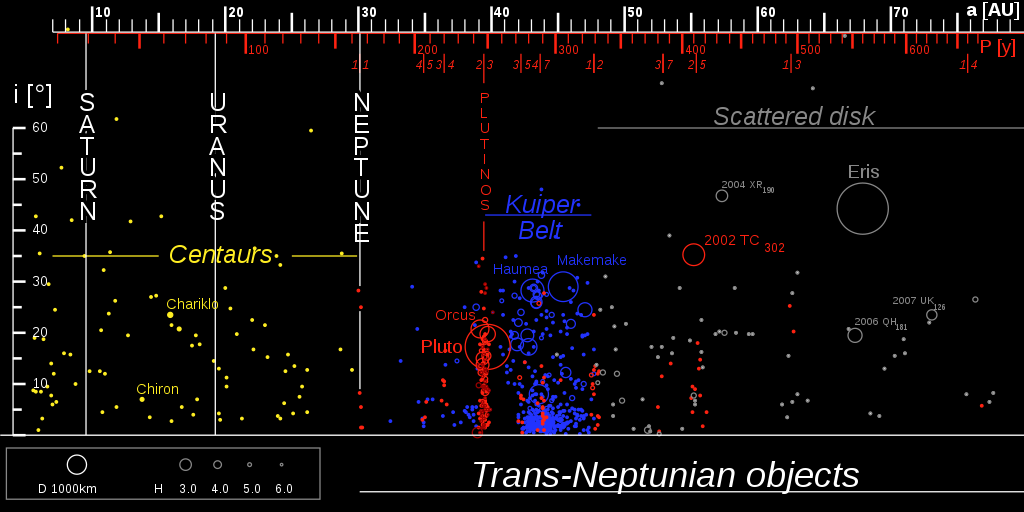
This also means that Neptune can be in only one of two places in the Pluto Return chart. It can be found at its natal opposition point or its natal return point. And every other Pluto Return would alternate positions. For Rome, Neptune can only ever be placed in Aries or Libra during a Pluto Return.
Plotting this out for Rome, one can see that more often than not, when the Neptune was placed in Aries, Rome was under an external threat way more often than not. When it was placed in Libra, Rome experienced a larger variety of possibilities. Sure, sometimes an external threat was associated with this, but changes to a government occurred more often with Neptune in Libra. It was also more likely a strong autocratic ruler appeared too.

Each of these makes sense based on the sign of the Neptune alone. Aries, is associated with war and there Neptune there means you can underestimate your opponent or walk into a war blindly. Libra is associated with partnerships and justice, and new governmental structures are often about that. It should be no coincidence that the two switches from Monarchy to Republic occurred under this configuration.
The conclusion one can draw from this is that while Pluto at the mundane level has an overall theme of power, control, transformation, and being under threat; it manifestation from return to return is heavily modified by the sign Neptune is in. Rome’s Neptune signs are Aries and Libra which lead is about yourself versus others. A common them in Roman history. For other countries and civilizations, how they express their Pluto Return will likely show differences based on their natal Neptune signs.
Articles in this Series:
Rome’s Founding Mythical Chart
Ancient Rome’s Pluto Returns: Governance Crisis and Barbarian Attack!
Byzantium Rome’s Pluto Returns: Invaders at the Gates!
Medieval Rome’s Pluto Returns: Religious Reform within While Chaos is Outside


